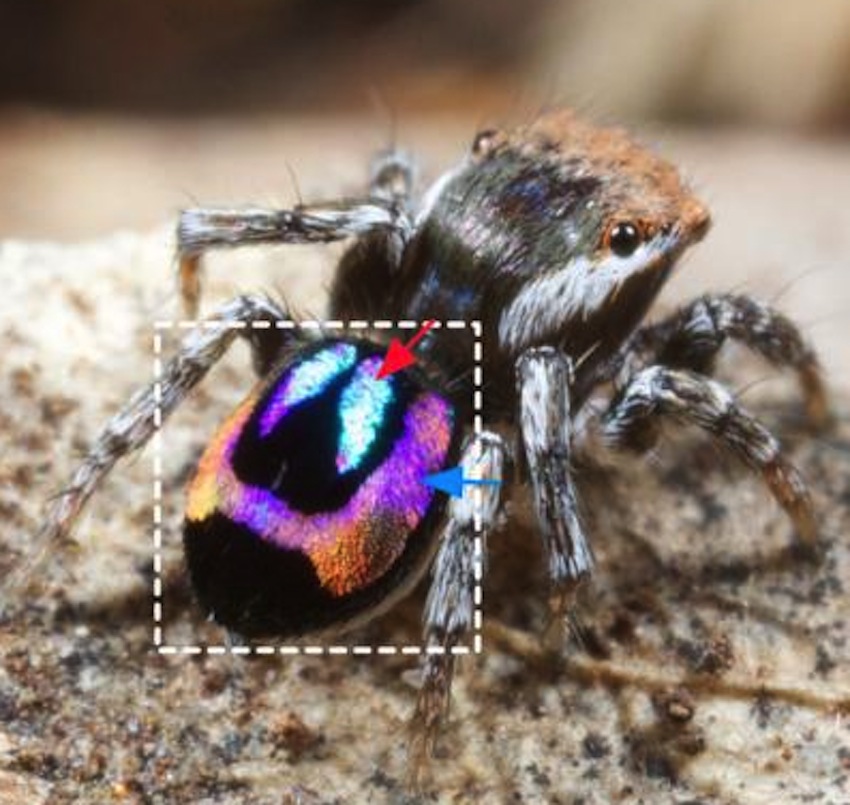Spiders may inspire new optical technology

Research into peacock spider courtship displays reveals potential new ways of engineering photonic structures
Research into the flamboyant courtship displays of male Australian peacock spiders could inspire new ways to produce colour in technology.
One species of peacock spider - the rainbow peacock spider (Maratus Robinsoni) - is particularly impressive, being the first instance in nature of males using an entire rainbow of colours to entice females to mate.
Bor-Kai Hsiung - now a postdoc at Scripps Institution of Oceanography at the University of California San Diego - assembled an international team of biologists, physicists and engineers while he was a PhD student at The University of Akron's (UA) Integrated Bioscience to discover how males make their rainbows.
The team investigated the spider's photonic structures using light and electron microscopy, hyperspectral imaging, imaging scatterometry and optical modeling to generate hypotheses about how the spider's scale generate such intense rainbows. The team then used nano 3D printing to fabricate different prototypes to test and validate their hypotheses.
It turned out that the intense rainbow iridescence emerged from specialised scales on the spiders abdomens.
These scales combine an airfoil-like microscopic 3D contour with nanoscale diffraction grating structures on the surface. It is the interaction between the surface nano-diffraction grating and the microscopic curvature of the scales that enables separation and isolation of light into its component wavelengths at finer angles and smaller distances than are possible with current engineering technologies.
"Who knew that such a small critter would create such an intense iridescence using extremely sophisticated mechanisms that will inspire optical engineers," said Dimitri Deheyn. Deheyn is the postdoc mentor for Hsiung at Scripps Oceanography and a coauthor of this research.
"As an engineer, what I found fascinating about these spider structural colours is how these long evolved complex structures can still outperform human engineering," added Radwanul Hasan Siddique, a postdoctoral scholar at Caltech and coauthor of this research. "Even with high-end fabrication techniques, we could not replicate the exact structures. I wonder how the spiders assemble these fancy structural patterns in the first place!"
Inspiration from these super iridescent spider scales can be used to overcome current limitations in spectral manipulation, and to reduce the size of optical spectrometers. These would be applications where fine-scale spectral resolution is required in a very small package, notably instruments on space missions, or wearable chemical detection systems.
































